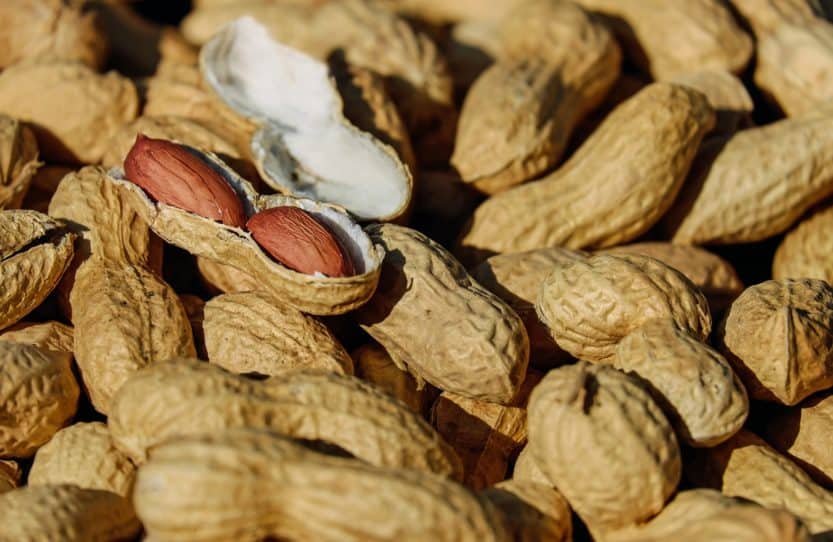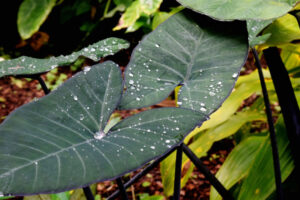Peanuts are a fun crop to plant in the garden. The peanut plant is as legume; but unlike other legumes, its seed pods mature underground. This makes growing peanuts a unique experience for gardeners who are accustomed to growing common bean crops.
Along with their unique growth habits, peanuts pack a nutritional punch. They are an excellent source of biotin, while also being a good source of copper, manganese, vitamin B3, molybdenum and protein.
Buy Peanut Seeds Online
| Image | Name | Rating | Shop |
|---|---|---|---|
 | JUMBO VIRGINIA PEANUTS |
Types of Peanuts
The four main types of peanuts are Runner, Virginia, Spanish and Valencia. Runner peanuts are a high yielding variety that typically performs well in warmer climates. The Virginia variety produces the largest peanuts of all and grows best in slightly cooler weather than runner peanuts.
Spanish peanuts have the richest flavor and highest oil content and grow best in very warm climates. And, finally, Valencia peanuts produce smaller peanuts with a sweeter flavor than most peanuts.
Peanut Growing Season
When choosing a variety one important consideration is the length of your growing season. If you have a long growing season, the Runner and Spanish varieties are a good choice. If you live in an area with a shorter growing season, then Virginia or Valencia peanut plants have a better chance of maturing before the first frost.
How Long Do Peanuts Take to Grow?
Peanut plants prefer warm temperatures, in order to germinate and grow. They also have a very long growing season of 100 to 130 days. In areas that have long growing seasons, it is best to directly sow the peanuts in the ground, once all danger of frost has passed.
When Can You Start Peanuts Indoors?
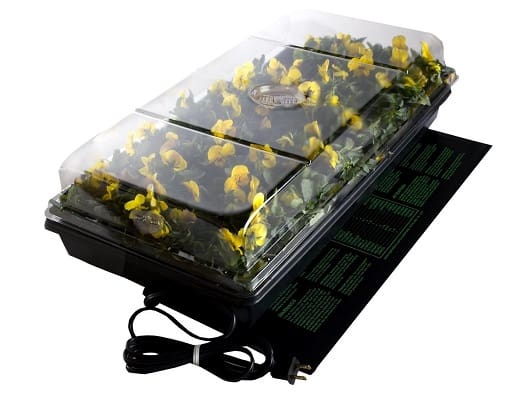
If you live in an area that has a shorter growing season, you can start peanut seeds indoors in a heated seed tray (Buy Online). In order to give the peanut plants enough time to mature, start them indoors at least a month before the last frost in your area.
Planting Peanuts
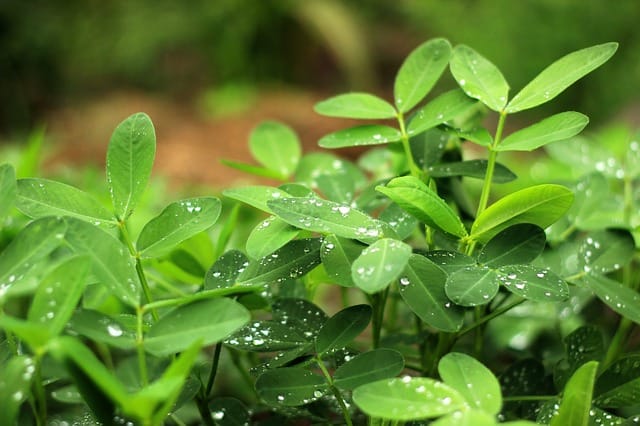
Peanuts thrive in warm conditions, so they need to be grown in a location that gets full sun all day. Make sure the soil in which you are planting your peanuts is very loose with good drainage. Peanut plants need to have a loose, almost sandy soil so that the peanuts will easily form underground.
Peanut Soil Requirements
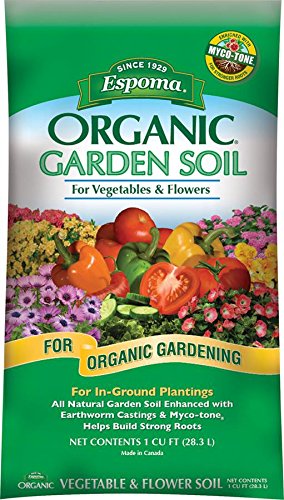
If your soil has a high clay content, you can add sand and compost to try and loosen it up. Avoid adding to much compost, because peanut plants actually prefer a slightly less fertile soil. Then, till the soil (Buy Online) to a depth of 12 inches before planting in any type of soil. Once the soil temperature is above 65 degrees Fahrenheit (18.3 C), you can plant the peanuts.
Peanut Plant Spacing
If you are sowing seeds directly into the garden, plant them 1.5 inches (9.8 cm) deep, spaced of 9 inches (11.4 cm) apart. Under some conditions, peanut seeds might have trouble germinating; and, in order to counter this, you can plant 2 or 3 seeds near each other to ensure even germination. If you are transplanting peanut seedlings, then carefully plant each seedling 9 inches (11.4 cm) apart.
After you plant the peanuts, water the area, thoroughly; and continue to water daily, for about a week. Be sure to keep the soil free of weeds early on; and, while the seeds are germinating, remove any weeds by hand, so you do not disturb the soil. Once the seeds germinate, then thin them down to their final spacing.
Should I Mulch Peanuts?
While it may be tempting to add a mulch around peanut plants, you have to remember that peanuts form by sending a “peg” into the soil, on which “peg” the peanut will form. Therefore, if you block the plants’ access to the soil, and the peanut plants will not produce any peanuts.
Peanut Care & Harvest
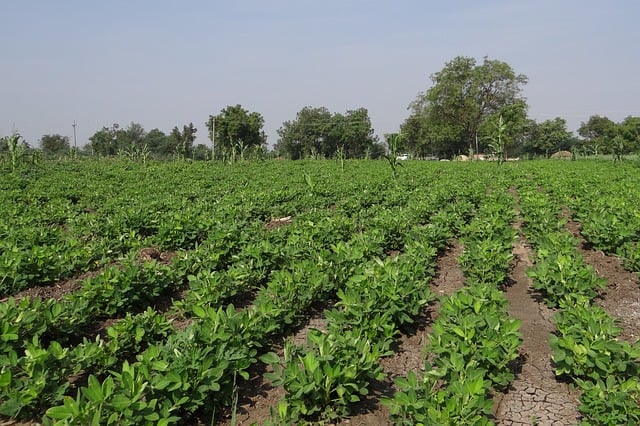
Once the peanut plants are about 6 inches (15.24 cm) tall, you should loosen the soil around the plant. Be careful not to dig near the roots and just lightly loosen the soil, so that the plant can push the “pegs” into the soil.
How Much Water Do Peanuts Need to Grow?
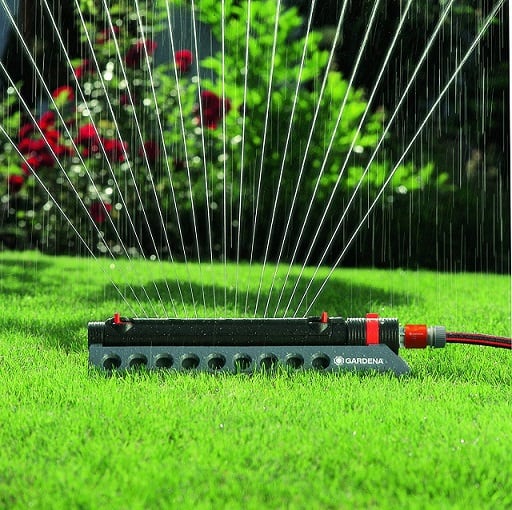
Make sure to keep the plants well hydrated, as peanut plants require 1 inch (2.5 cm) of water per week. Try to water lightly, multiple times a week, as this will limit the chance of water pooling around your plants. Any pooling around the base of the plant can cause the soil to crust over, making it harder for the plant to push its “pegs” into the soil.
Peanut Fertilizer Requirements
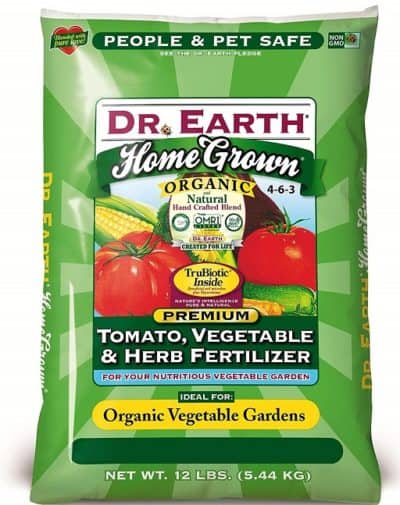
One nice thing about peanuts being a legume is that they require minimal fertilization. If you have to fertilize your peanut plants, only do so with a low-nitrogen fertilizer (Buy Online). Adding too much nitrogen to the plants will cause the plant to produce more foliage and fewer peanuts.
Peanut Pests
For the most part, peanut plants are relatively disease and insect resistant. If any problems, such as cutworms, cucumber beetles or aphids do appear, then treat the problem accordingly. The only other major problem is small rodents, digging up the maturing peanuts. If you see small holes around your plants, then you can set traps or use other deterrents, such as a cat, to protect the plants.
How Do Peanuts Grow in the Ground?
Watching peanut plants mature is fascinating. Unlike most legumes that mature above ground, knowing what stage of development peanuts are in is a bit of mystery. As the plant sets flowers, the plant will begin sending long stems or “pegs” into the soil. A peanut pod will then form on the end of each peg.
Make sure when weeding or caring for the plant that you do not snap these “pegs” off the plant. Any peanuts that are forming underground will draw nutrients from the plant until they are fully mature.
When are Peanuts Ready to Harvest?
The peanuts are ready to harvest at the end of the season when the tops of the plants turn yellow and start to die back. Once they are ready, use a garden fork to dig around the plant to loosen the soil; and, then, pull up the plant, roots and all. You should see peanuts clinging to the stems, as long as none of the peanuts got pulled off in the soil.
Storing Peanuts
Hang the peanut plant to dry for about a month in a warm dry place where mice and squirrels cannot reach it. Once the peanuts are dry, you can store them in their shell for up to 3 months, or in the refrigerator for 6 months, and in the freezer for years.


